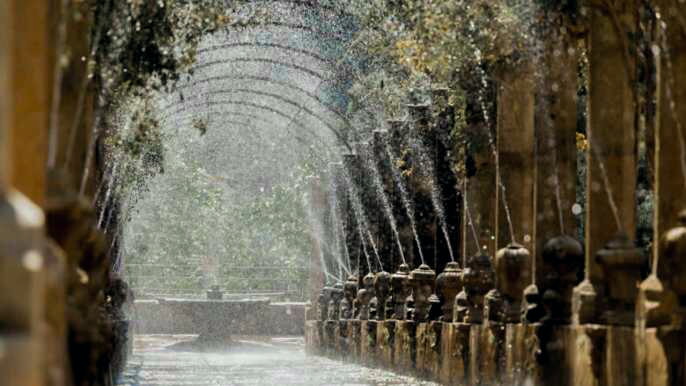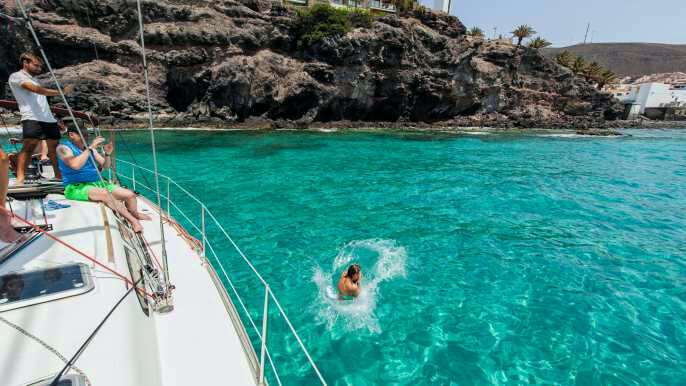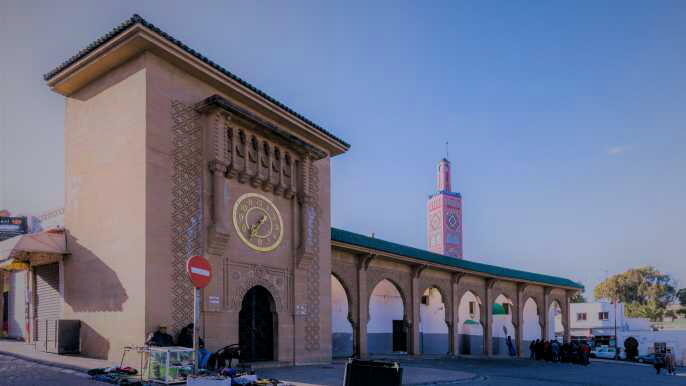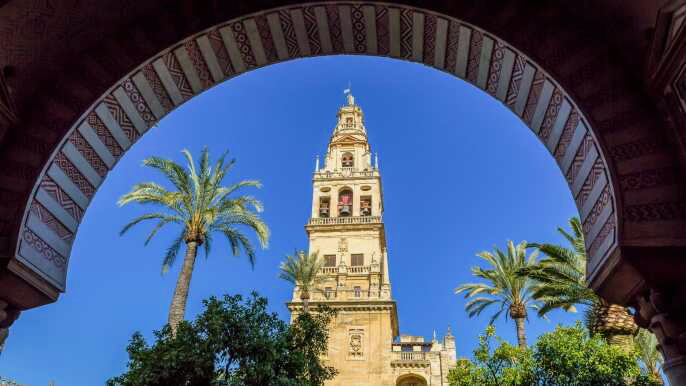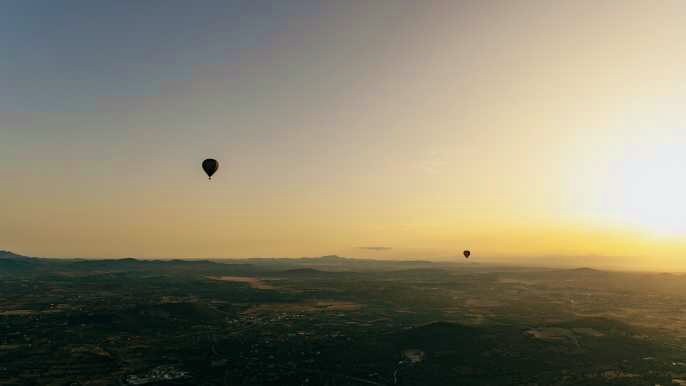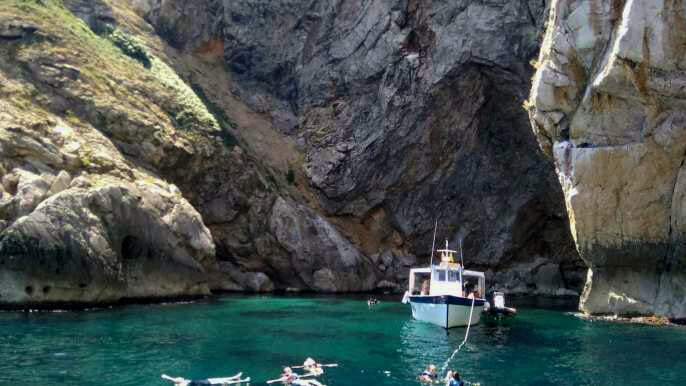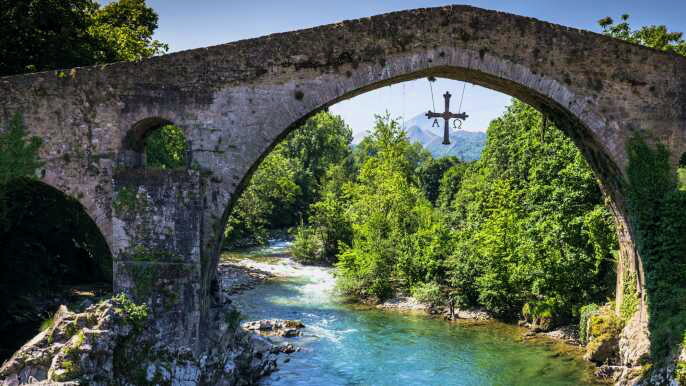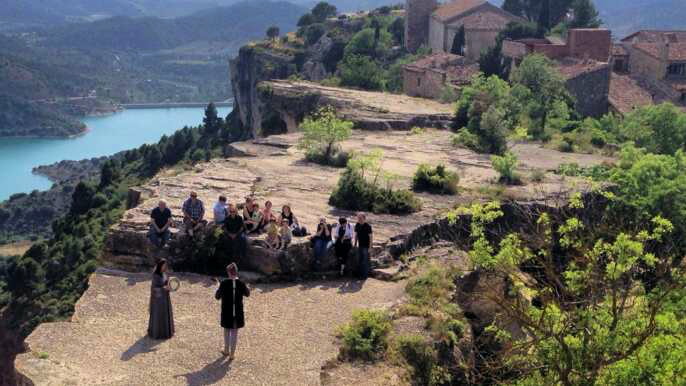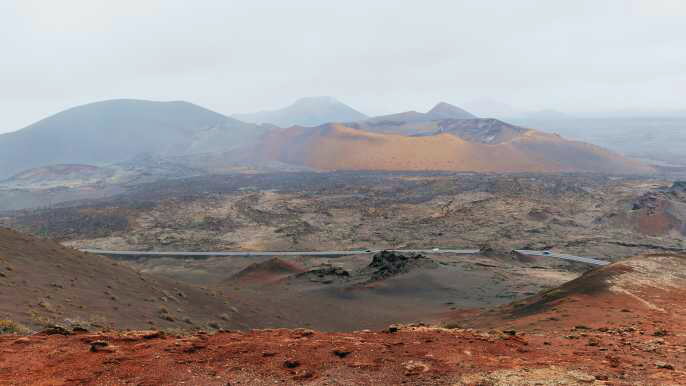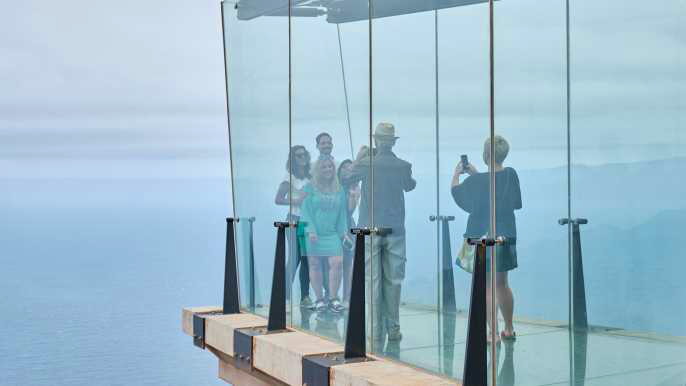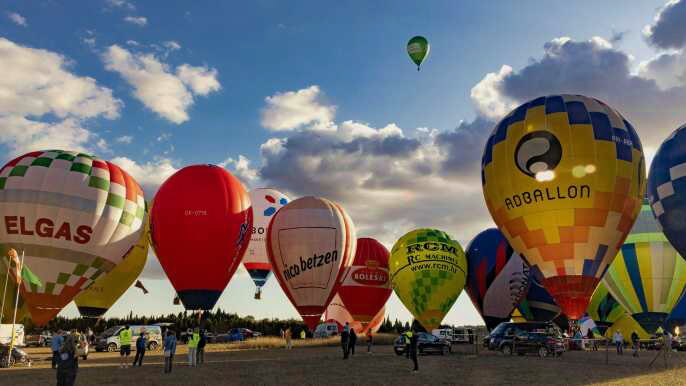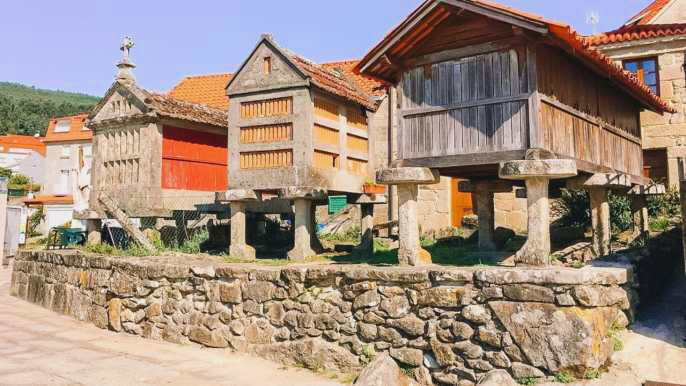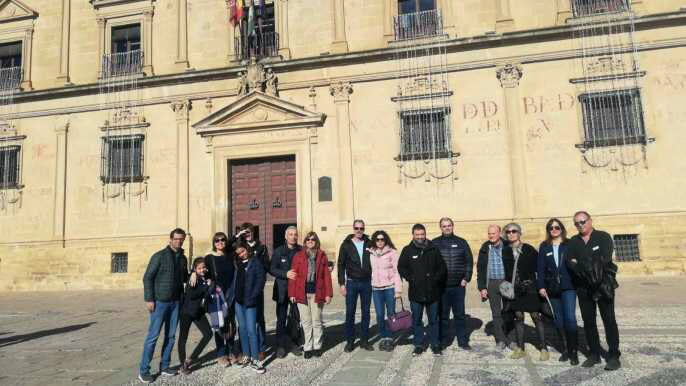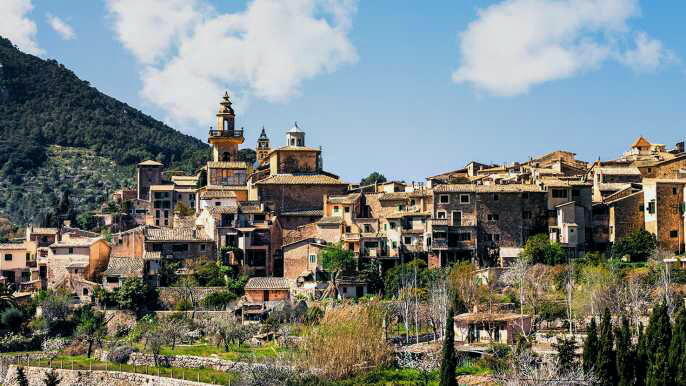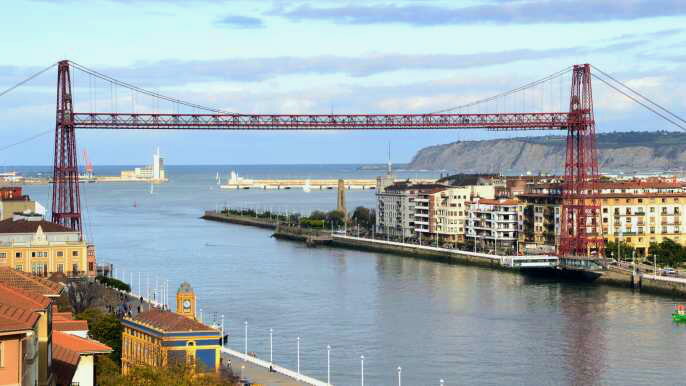Salamanca is a beautiful city with ornate sandstone architecture and one of the world’s oldest universities. It is also a Unesco World Heritage Site.
A must-see in Salamanca is the Old Roman Bridge, which has been a part of the city’s coat of arms since the 13th century. It is a 176-meter long stone bridge with more than half of its original arches still intact.
1. Cathedral of Salamanca
The Cathedral of Salamanca is a must-visit in the city. This Romanesque monument was built in the 12th century and is topped by an impressive world-famed dome, called the Torre del Gallo.
It's worth getting lost in this cathedral for the architecture and stunning views. It also has beautiful mural paintings, altarpieces, tombs and chapels to explore.
It's one of the most popular tourist attractions in the city, and visitors can climb to the top of its campanario for sweeping city views. The tower is 198 steps high and has some great windows to see the city below.
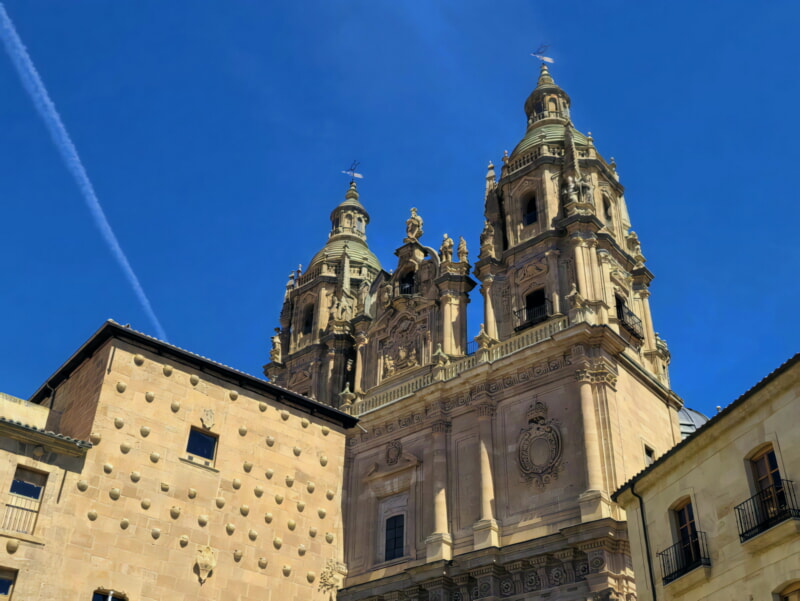
2. Old Roman Bridge
Salamanca's Old Roman Bridge is one of the city's most iconic monuments, and a great way to get a feel for its history. It was built in the first century and is still in use today.
Unlike modern bridges, which are anchored to the ground by piers, Roman bridges were built with a unique arch shape. This allowed the bricks to be inserted at an angle, creating a structure that was stronger in the centre.
The Romans also used a unique form of cement for their piers. It was made of two parts pozzolana, a natural type of slag, and powdered lime.
Many of the world's oldest buildings still stand, thanks to innovations introduced by the Romans. These innovations include the arch and a unique cement that's said to be ecologically friendly.
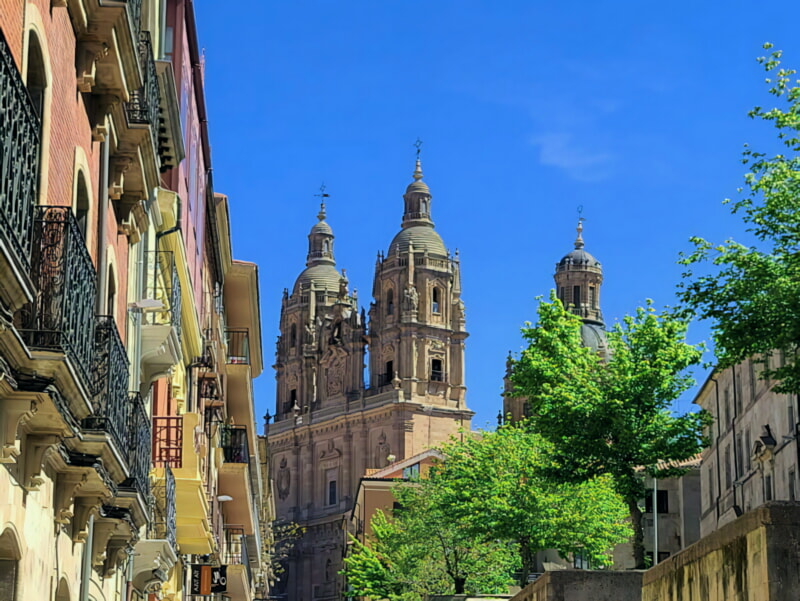
3. Arribes del Duero Nature Park
To the west of Salamanca and Zamora is the Arribes del Duero Nature Park, one of the most impressive inland landscapes in Spain. The river Duero runs through an extraordinary labyrinth of canyons and gorges (arribes) as it forms the border between Spain and Portugal, forming a true geological throat.
The park stretches over 106.105 hectares in the autonomous community of Castile and Leon, and is located on the astride border with Portugal. It is one of the most striking protected areas in inland Spain, owing to its unique geographical characteristics and its high biodiversity.
The area has a scientific interest value of 245, a didactic interest value of 170 and a tourist or recreational interest value of 145. It also features a wide range of attractions and activities for visitors, such as the Fermoselle viewpoint, the Torojon viewpoint, the Requejo street or the Hermitage of La Soledad.
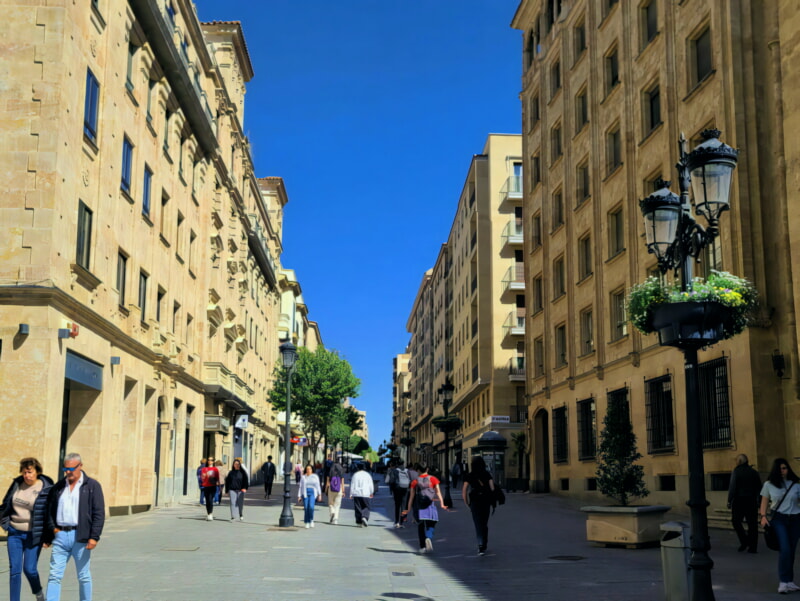
4. Casa de las Conchas
One of Salamanca's most iconic landmarks, the Casa de las Conchas is a historic building that was originally built in the 15th century. Today it houses a public library.
The imposing facade was constructed from 1493 to 1517 and is a mix of late Gothic and Plateresque style. It's decorated with more than 300 shells, the symbol of Santiago de Compostela.
It was built by Rodrigo Arias de Maldonado, a knight of the Order of Santiago de Compostela and professor in the University of Salamanca.
The house is still open to the public, but it's best to book a guided tour for a full explanation of the building's history and architecture. The inside of the building features a courtyard, characterized by arches supporting square pilasters on the lower floor and shorter columns in Carrara marble on the upper floors.
5. Plaza Mayor
Plaza Mayor is one of the city's most beautiful squares, and has seen a lot in its history. Throughout the 17th century it was the setting for social and state events, including weddings and royal births, bullfights and executions.
A ring of old, traditional shops and cafes sit under the square's porticoes and a Christmas market takes place every year. It is also the location for stamp collection markets on Sundays and holidays.
The original Plaza Mayor was designed by Juan Gomez de Mora and built in 1617. Unfortunately, it was destroyed by several fires until Juan de Villanueva rebuilt it for the second time in 1790.
